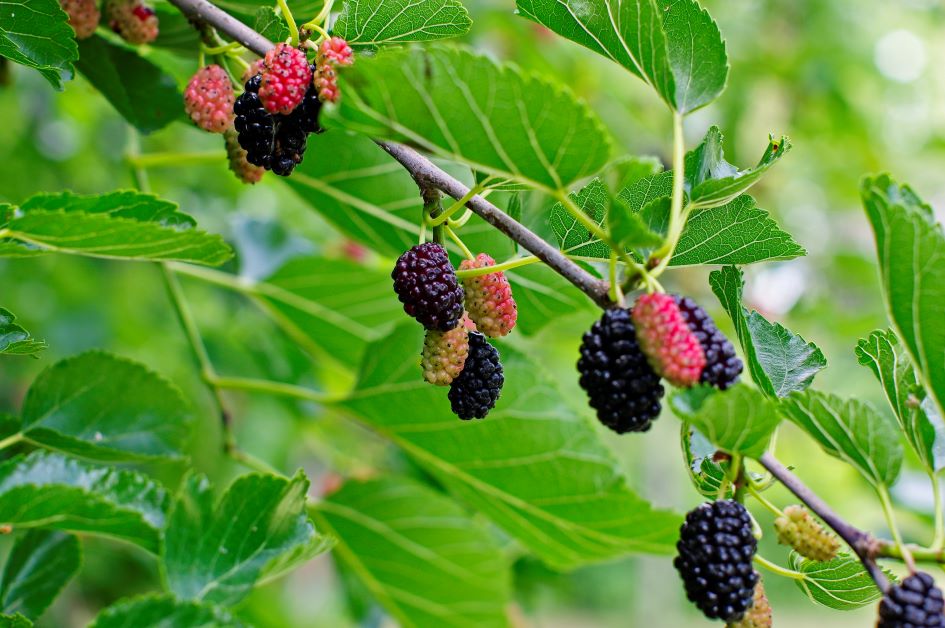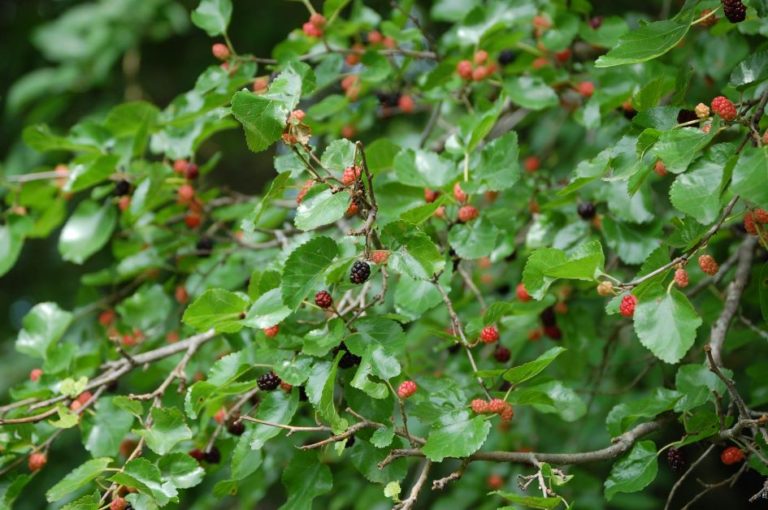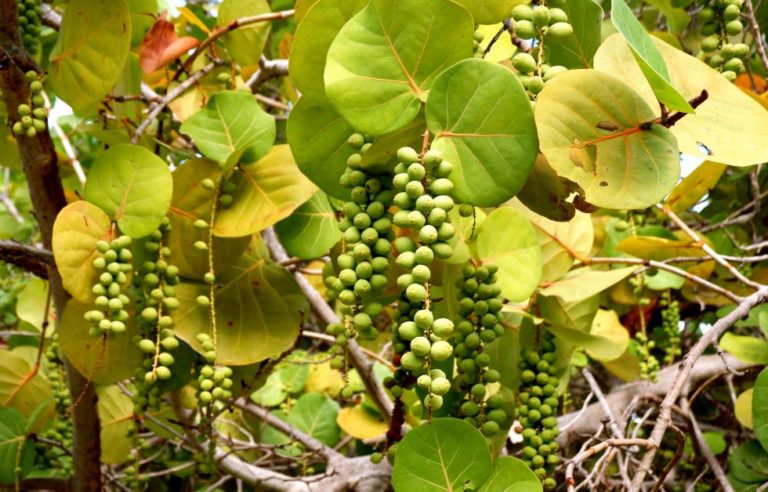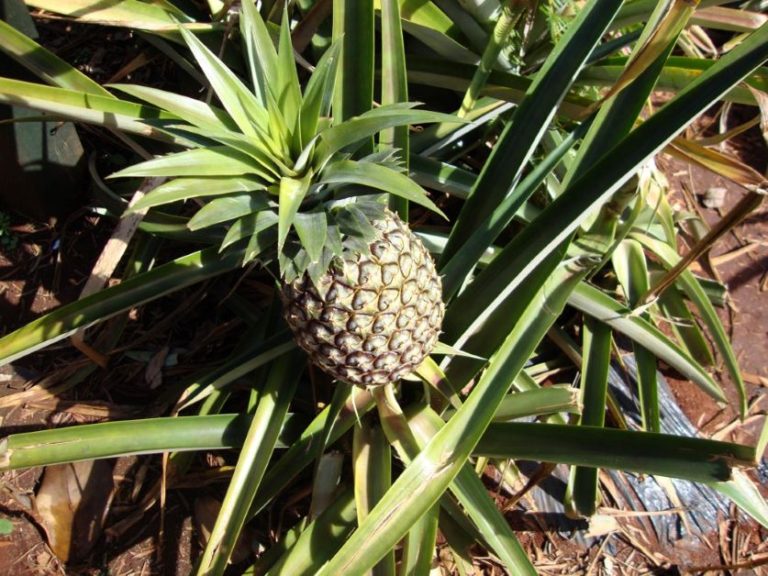How to Grow a Mulberry Tree
The mulberry holds an interesting part of Florida’s history. In fact, the mulberry was here in Florida long before Ponce de Leon landed on our shore. The Muskogee, Iroquis, and Cherokee tribes all used mulberries in some way – whether as a food source, a way to make dye, or as a component to make weapons.
Mulberry remains a popular tree today. There’s even a small city in Central Florida named after this tasty fruit. I love mulberry because it’s so dang prolific — one small tree will yield bushels and bushels of fruit.
You won’t find mulberries in the grocery store because they have a short shelf-life, so the only way you’re going to taste a mulberry is to grow your own. Learn how to grow a mulberry tree so that you can enjoy a late summer mulberry harvest this season.
Is Mulberry a Tree or a Bush?
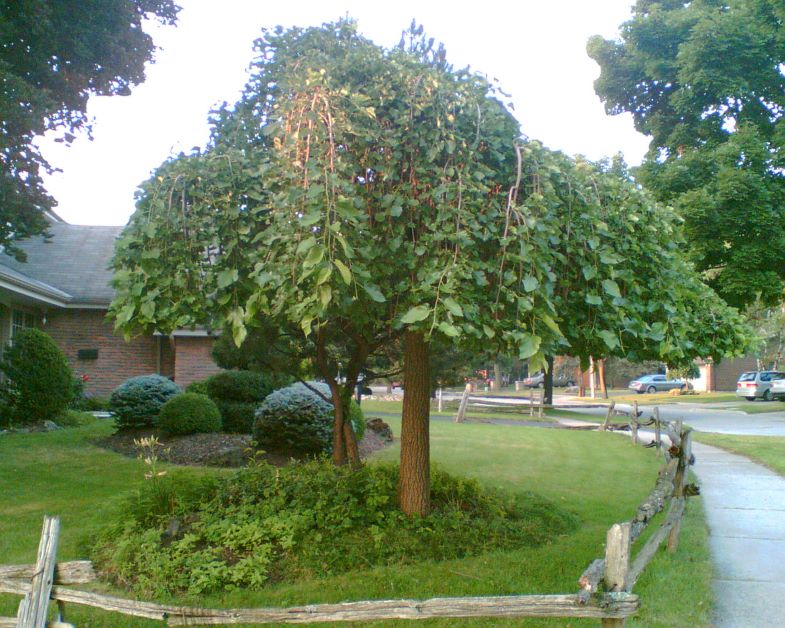
Contrary to the popular children’s song, mulberry is a tree, not a bush. Depending on the variety, it can grow to up to 60 feet tall.
The mulberry (Moras spp.) is related to jackfruit, figs, and breadfruit. The three most common species of mulberry are the red mulberry (Morus rubra), the black mulberry (Morus nigra), and the white mulberry (Morus alba).
It may seem obvious, but red mulberries produce fruits that are red or reddish black, and black mulberries produce black fruit. White mulberries, though, can come in white, red, pink, or black. White mulberries are called white mulberries because of the color of their flowers, not their fruits.
The red mulberry is also known as the American mulberry and is a Florida native.
Mulberries can have several waves of fruit over the summer. The berries can be small or large and some are sweeter than others.
If you’re adding a mulberry tree to your garden to harvest fruit, pay attention to the tag – some mulberry trees are ornamental only and don’t produce berries.
Some people may think that mulberry is a bush because it also comes in dwarf varieties. While these are still technically trees, they’re smaller and perfect for container gardening.
Mulberry Care
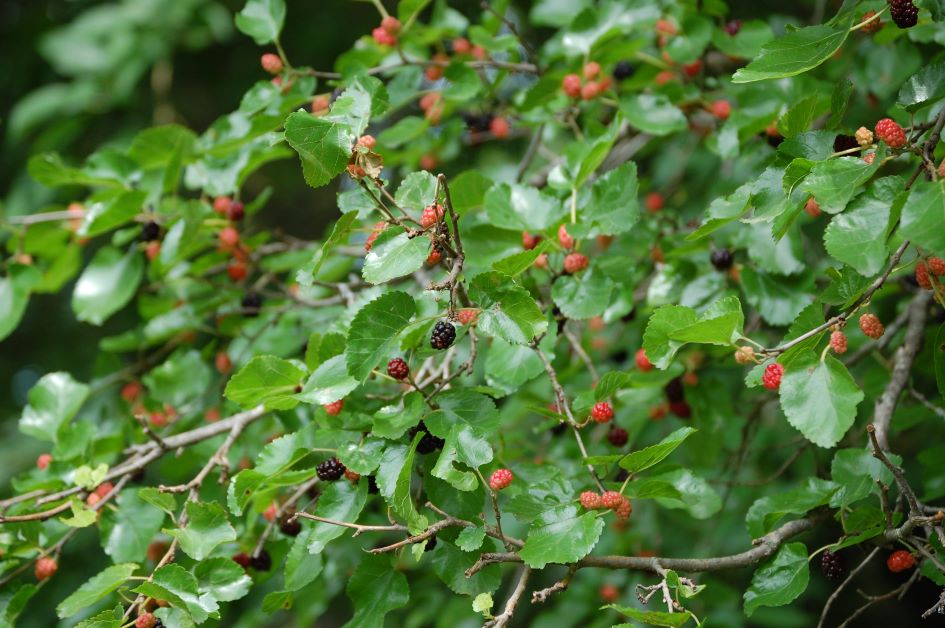
Temperature and Light
Mulberry trees can tolerate a wide range of temperatures. In cold weather climates, the tree will go dormant in winter and come back with new growth in spring.
The ideal fruiting temperature for the mulberry is 68F to 86F.
Mulberries are a full-sun tree. They can grow in dappled shade, but you’ll get more fruit and faster growth if you plant them in a spot where they get plenty of sunshine.
Water
Mulberries are drought-tolerant but do need more water when they’re young. Water your young mulberry a few times a week. As with most plants, keep it moist but not soggy and let it dry out between watering. Once the tree is established, you can cut back.
Do know that if a mulberry is growing in drought conditions, it won’t produce as much fruit. Dry conditions can also cause the fruit to fall off of the tree before it’s ripe.
Soil
Mulberries aren’t very picky about their soil. Loamy, fertile soil is best but they’ll grow in sandy soil, too. The most important thing is that the soil is well-draining.
Soil pH isn’t usually an issue for the mulberry, but they do prefer a range between 5.5 to 7.
Fertilizing
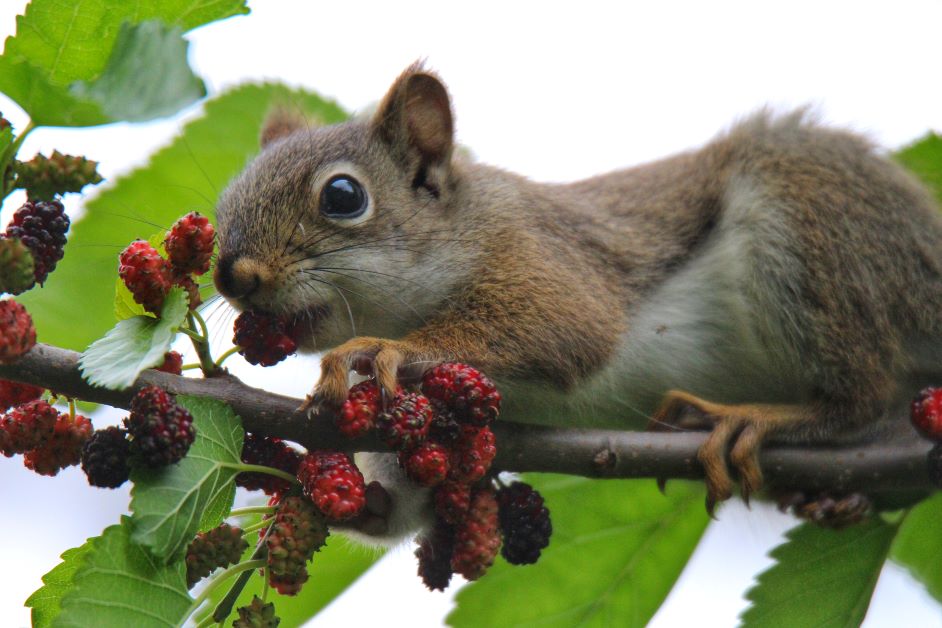
Fertilizing your mulberry isn’t absolutely necessary, but you can get better growth and more fruit with a yearly feeding of organic 10-10-10 fertilizer right before spring. You should only fertilize after your tree has been growing for a year.
Troubleshooting
Mulberry Tree Diseases
Generally, mulberry is disease resistant. If you do end up with something, it’s usually powdery mildew or root rot.
You can combat root rot by not overwatering and making sure that your tree is planted in well-draining soil.
Plants contract powdery mildew from water sitting on the leaves for too long. Always water your tree at the base of the trunk instead of from overhead. Drip irrigation or a wand hose attachment can help with this. Pruning will also improve airflow through the leaves, helping your tree to dry out quicker.
Mulberry Tree Pests
Mealybugs, whiteflies, spider mites, and scale are all somewhat common for the mulberry. Fortunately, pests are only worrisome for a young mulberry. Established trees are hardy enough to handle pests (as long as there isn’t an incredibly large infestation).
Other than scale, you can fight all of the pests on this list by using homemade neem oil spray.
The only effective way to get rid of scale is to remove them by hand. Target the scale and gently scrape them off using a butterknife. You can also rub them off with a cotton ball soaked in rubbing alcohol.
How to Plant a Mulberry Tree in the Ground
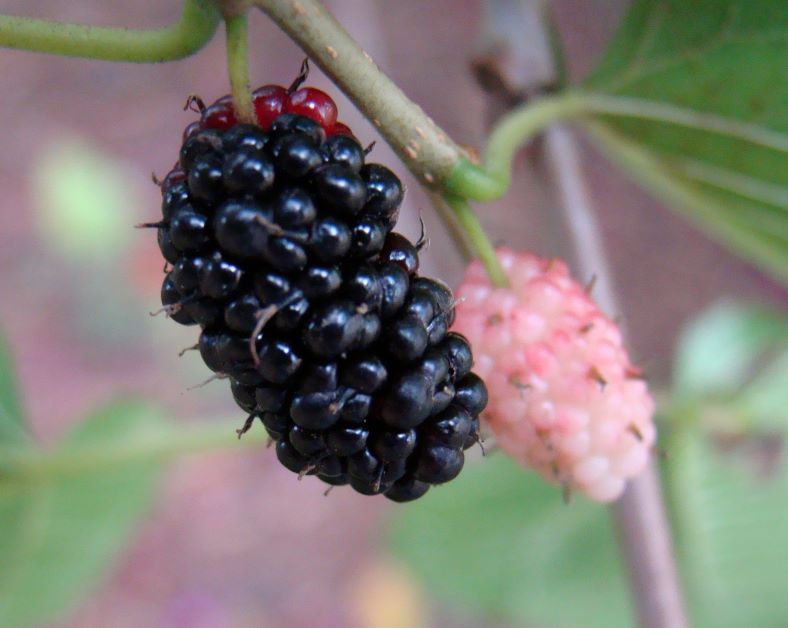
The first step in planting a mulberry tree is choosing a location. Pick a spot that gets plenty of sun and is far enough away from buildings, septic tanks, water pipes, and electrical lines. Mulberry trees have invasive roots that can cause major damage if planted too close to structures.
Another thing to think about when planting mulberry is the mess factor. Red and black mulberries will stain wherever they fall. Unless you’re growing a variety that produces white berries, avoid growing your mulberry next to sidewalks and driveways.
Most commercially grown mulberries are self-pollinating, which means you only need one to produce fruit. If your mulberry was grown from seed, then it will either be male or female and you’ll need more than one to cross-pollinate. When in doubt, ask your nursery or check with your local UF/IFAS extension office.
To plant your tree:
- Dig a hole twice the size of the tree’s root ball in both depth and width.
- Remove the tree from its container and carefully jostle the roots a little to loosen up the root ball.
- Put the tree in the hole.
- If you plan on amending your soil, this is the time to do it. Add compost or organic matter into the hole with the tree, making sure to keep things well-draining. Fill the rest of the hole with the soil you dug up.
- Tamp the earth down with your foot to make sure everything is firmly in place.
- Water your tree well and continue to do so for the next few weeks or months while the roots establish.
How to Grow Mulberry Trees in Pots
If you want to grow your mulberry tree in a pot, it’s important to choose the right variety. The two most popular dwarf varieties for mulberry container gardening are the Dwarf Everbearing and the Dwarf Issai. Both are members of the Morus alba family and grow up to 15 feet.
Dwarf Everbearing produces small, black fruit that is known for its incredible sweetness. It has several waves of fruit throughout the year.
Dwarf Issai also produces black fruit but the berries are much bigger than the Everbearing and not as sweet. This is a good cultivar for Florida because it does well in high humidity.
It’s best to graduate your mulberries into progressively bigger containers as they grow. At first, start with a 5-gallon container. When your tree starts getting root-bound, transplant it into a 10-gallon container. Repeat this process until your tree grows to your desired height.
Remember, your tree will grow as big as the container you put it in. If you want a smaller tree, keep it in a smaller container.
When it comes to soil, use a mix that’s specifically designed for trees and shrubs. Add some perlite to improve drainage, and always make sure there are enough holes in the bottom of the container to keep your soil from getting soggy.
How to Prune a Mulberry Tree
Pruning your mulberry is important to keep the berries within reach. If you let the tree get too tall, then birds will get to enjoy more berries than you do.
Mature mulberry trees can take a harsh pruning, so don’t be afraid to be somewhat aggressive. If you’re growing a grafted tree, just be careful not to cut below the graft.
The best time to prune is while the tree is dormant. If you prune while the tree is flowering, then you’ll reduce the berries in your harvest.
You’ll need some tools to prune your mulberry:
Always sterilize your tools between plants, and don’t cut branches that are more than 2 inches thick. Mulberries have a hard time healing bigger cuts – large open wounds on your trees make it more likely it’ll contract a disease.
Choose smaller, lateral branches that overlap each other. Remove suckers and low-lying branches that will cause your fruit to sit on the ground.
Mulberry Recipes
Mulberries are sweet enough to eat fresh off the tree. Since mulberries are a bit messy, they’re a hit with kids.
Mulberry wine, jam, syrup, and pies are also popular.
Because they go bad so quick, you may want to consider freezing your mulberries to use later. Mulberry trees produce a lot of fruit in a short time span, and freezing is a good way to reduce waste.
Featured Photo Credit: PepperberryFarm
Disclaimer: Offbeet-Gardener is reader-supported. At no extra cost to you, I may receive a commission made from purchases through links in this post.

